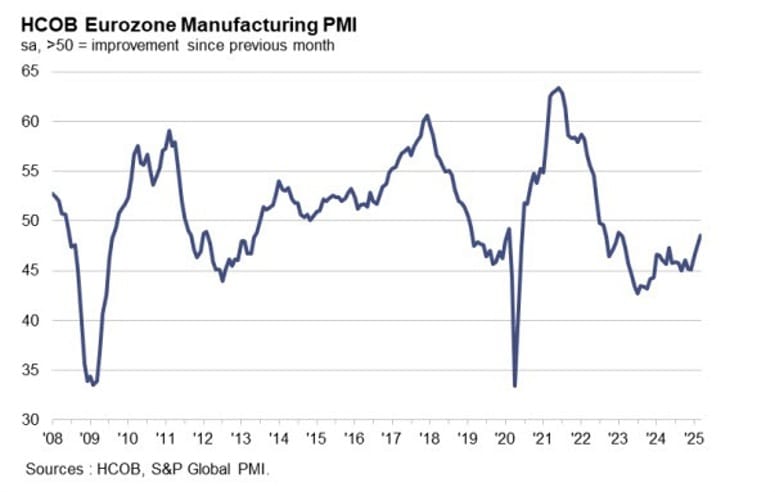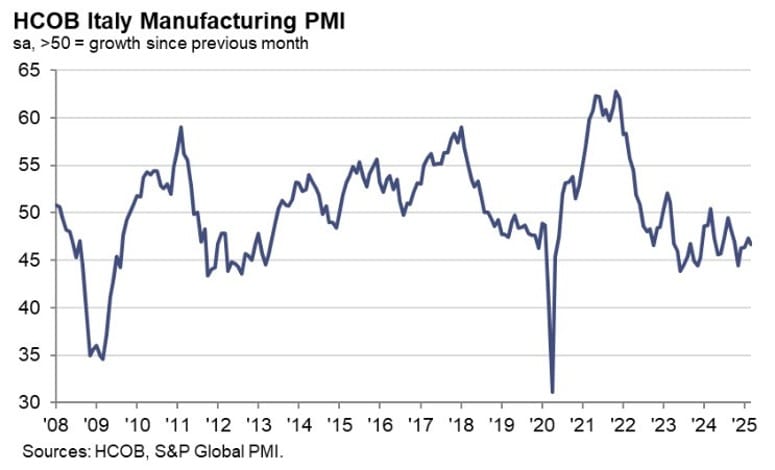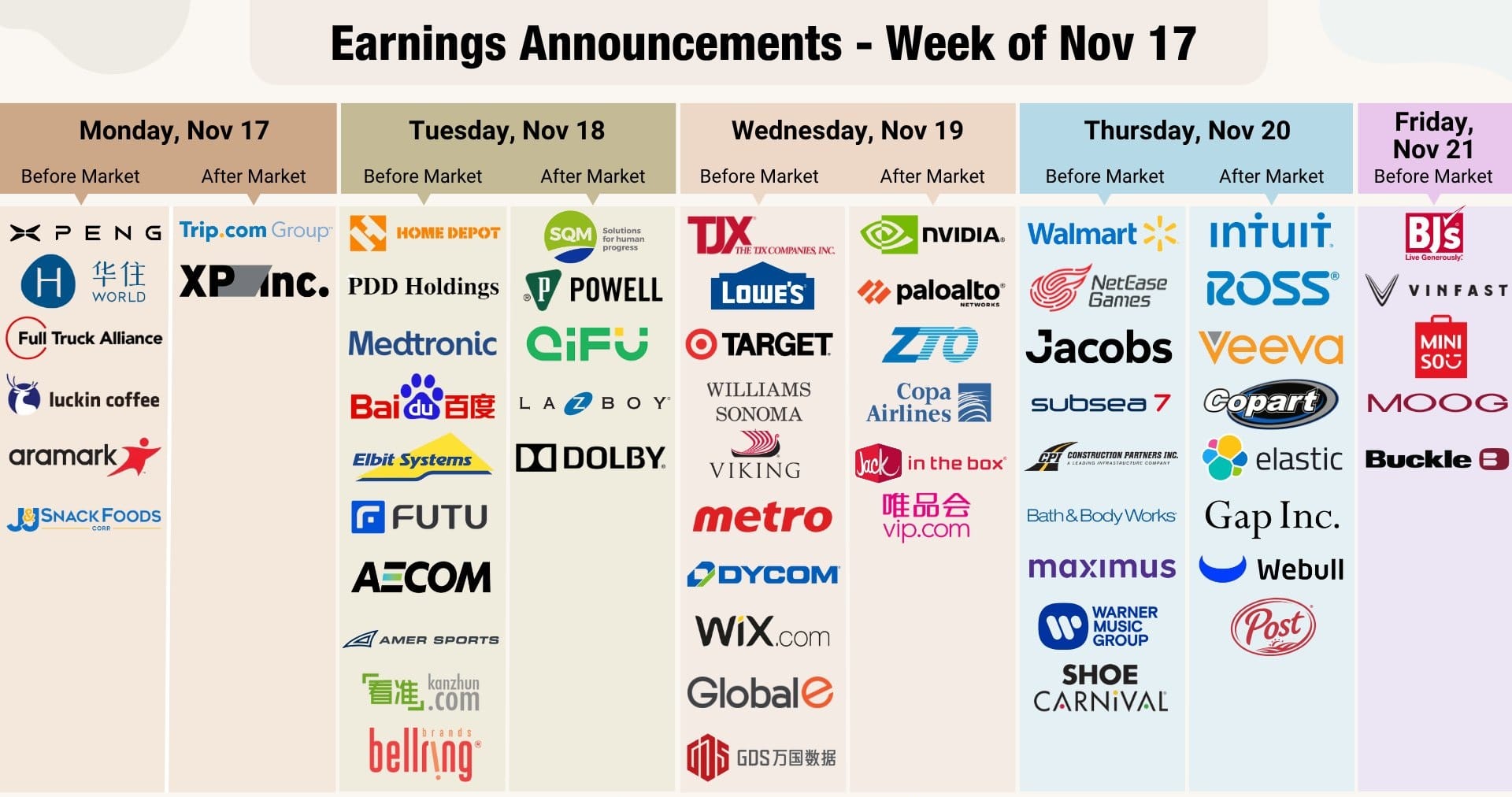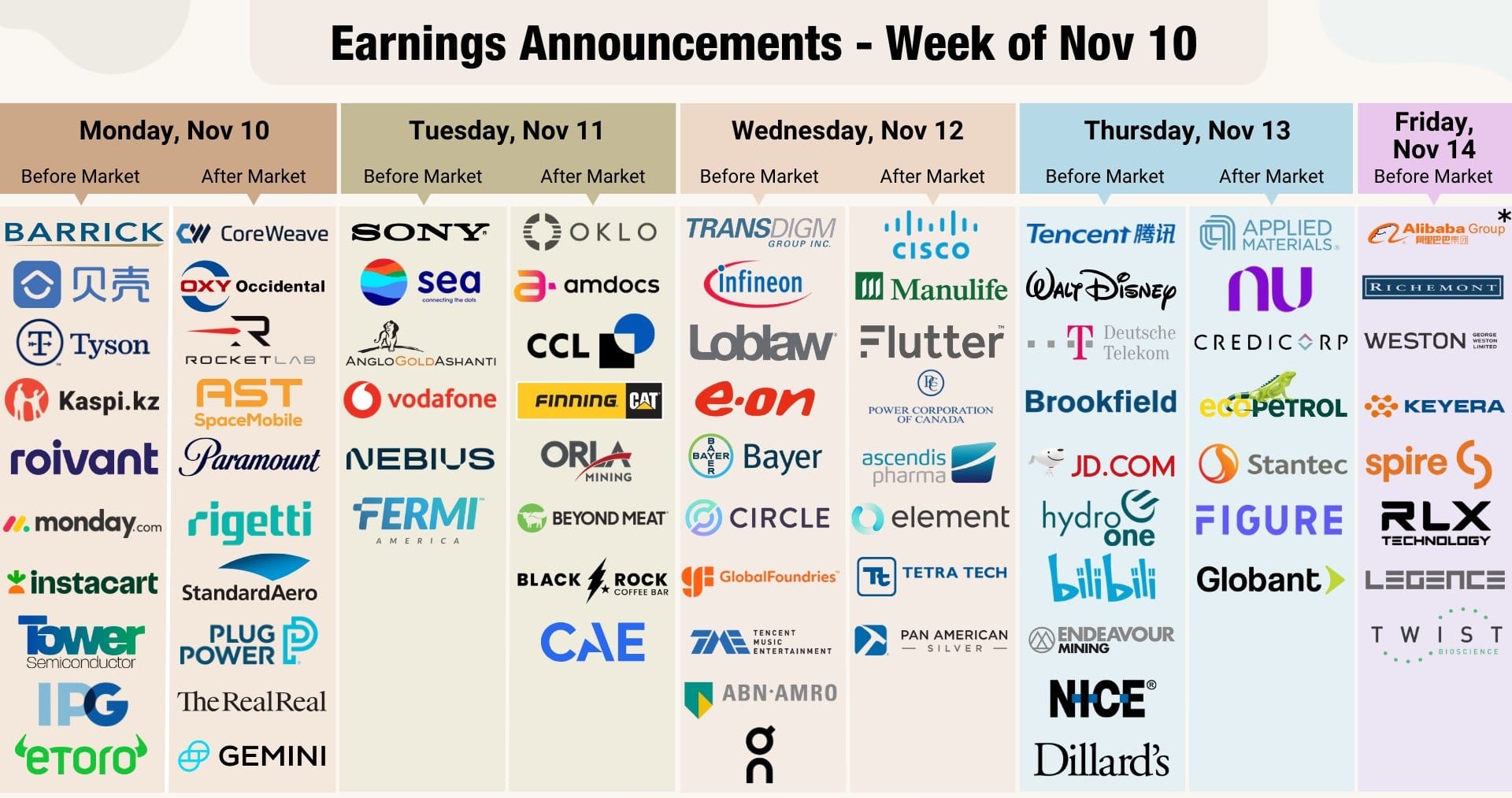North America News
Stock Market Struggles Amid Tariff Uncertainty
The stock market had a volatile session on Tuesday, with the Dow slipping 11.80 points to 41,989.96, while the Nasdaq climbed 150.60 points to 17,449.89, and the S&P 500 added 21.22 points to 5,633.07.
Key Market Movers:
- The market opened lower after the ISM Manufacturing PMI dropped to 49.0%, reinforcing concerns about economic slowdown.
- Investor sentiment remains fragile ahead of Wednesday’s tariff announcement.
- A late-session rally in mega-cap stocks helped the Nasdaq and S&P 500 recover. Microsoft (+1.8%), Apple (+0.5%), and NVIDIA (+1.6%) were among the top gainers.
Sector Performance:
- Winners: Consumer discretionary (+1.1%), communication services (+1.0%), and technology (+1.0%).
- Losers: Health care (-1.8%) and financials (-0.2%).
Bond Market:
Treasury yields fell across the curve. The 10-year yield dropped nine basis points to 4.16%, while the 2-year yield declined five basis points to 3.86%.
Year-to-Date Market Performance:
- Dow Jones: -1.3%
- S&P 500: -4.2%
- Nasdaq: -9.6%
- S&P Midcap 400: -5.9%
- Russell 2000: -9.8%
Key Economic Events to Watch on Wednesday
Investors are preparing for a busy day of data releases that could impact market sentiment:
- 7:00 AM ET: MBA Mortgage Index (previous: -2.0%)
- 8:15 AM ET: ADP Employment Change (previous: 77K)
- 10:00 AM ET: February Factory Orders (previous: 1.7%)
- 10:30 AM ET: Weekly Crude Oil Inventories (previous: -3.34M)
Atlanta Fed GDPNow Estimate Drops Further to -3.7%
The Atlanta Fed’s GDPNow model has revised its Q1 growth projection down to -3.7%, a notable drop from the previous -2.8% estimate.
The inflation-adjusted “gold GDP” figure also took a hit, declining from -0.5% to -1.4%. This marks a new low for growth expectations and suggests increasing concerns over the state of the economy.

In their own words:
The GDPNow model estimate for real GDP growth (seasonally adjusted annual rate) in the first quarter of 2025 is -3.7 percent on April 1, down from -2.8 percent on March 28. The alternative model forecast, which adjusts for imports and exports of gold as described here, is -1.4 percent. After this morning’s construction spending report from the US Census Bureau and incorporation of the available March data into the models’ dynamic factor model, including manufacturing data from Institute for Supply Management and measures of consumer attitudes from two surveys, both the standard model’s and the alternative model’s forecasts of first-quarter real final sales to private domestic purchasers growth declined from 1.5 percent to 0.4 percent.
US Manufacturing PMI Rises Slightly, But ISM Survey Shows Ongoing Weakness
S&P Global Manufacturing PMI:
- Final March PMI: 50.2 (prior 49.8).
- Slightly better than expected, but business confidence weakened.
- Employment stalled, ending a four-month streak of growth.
Chris Williamson, Chief Business Economist at S&P Global Market Intelligence
“The strong start to the year for US manufacturers has faltered in March. A combination of improved optimism surrounding the new administration and the need to front-run tariffs had buoyed the goods-producing sector in the first two months of the year, but cracks are now starting to appear. Production fell for the first time in three months in March, and order books are becoming increasingly depleted.
“While business confidence about the outlook remains relatively elevated by standards seen over the past three years, this is based on companies hoping that the near- term disruption caused by tariffs and other policies will be superseded as longer-term benefits from the policies of the new administration accrue. However, March has seen more producers question this belief. Business optimism about the year ahead has deteriorated further from January’s near three- year high, and has dropped sharply over the past two months, causing firms to stop raising payroll counts for the first time since October.
“A key concern among manufacturers is the degree to which heightened uncertainty resulting from government policy changes, notably in relation to tariffs, causes customers to cancel or delay spending, and the extent to which costs are rising and supply chains deteriorating in this environment. Tariffs were the most cited cause of factory input costs rising in March, and at a rate not seen since mid-2022 during the pandemic-related supply shock. Supply chains are also suffering to a degree not seen since October 2022 as delivery delays become more widespread.
“Data in the coming months will provide important insights into how the inflationary aspects of policies such as tariffs balance out against any benefits to US producers.”
ISM Manufacturing Survey:
- March ISM Manufacturing Index: 49.0 (expected 49.5, prior 49.5).
- Prices paid surged to 69.4, the highest since June 2022, signaling cost pressures are rising.
- Employment index fell sharply to 44.7, the lowest since September.
- New orders dropped to 45.2, the lowest since June 2023.
- Production declined to 48.3, slipping below the growth threshold.

Key Takeaways:
- Manufacturing remains in contraction despite the PMI improvement.
- Falling employment and new orders signal ongoing challenges for the sector.
- Rising input costs could complicate the inflation outlook.
- “Complex markets saw a surge in volume buying in anticipation of 2025 being slightly better than 2024. In March, however, all markets saw a slowdown, with fear and inventory stocking to hold through a potential crisis.” [Chemical Products]
- “Acute shortages continue to impact supply chain continuity. Chinese restrictions on critical minerals such as germanium have caused major shortages, resulting in all supply needed in 2025 already assumed — and, not surprisingly, significant price increases as a result. Tariffs are causing minor ripples at the moment in securing supply, with purchase order terms narrowing due to uncertainties. A&D (aerospace and defense), which has been very resilient, is starting to see questionable medium- to long-term demand due to governmental policy, including retaliatory actions taken by foreign countries with foreign military sales.” [Transportation Equipment]
- “Customers are pulling in orders due to anxiety about continued tariffs and pricing pressures.” [Computer & Electronic Products]
- “Starting to see slower-than-normal sales in Canada, and concerns of Canadians boycotting U.S. products could become a reality.” [Food, Beverage & Tobacco Products]
- “Business condition is deteriorating at a fast pace. Tariffs and economic uncertainty are making the current business environment challenging.” [Machinery]
- “New order levels have increased and are better than expected. We suspect that our customers are trying to build inventory at current prices to get ahead of expected tariff and related cost increases. We expect this surge in demand to be short-lived.” [Fabricated Metal Products]
- “Demand has been stable, consistent with last year. No evidence of growing demand. Tariff impacts and mitigation strategies are a daily conversation.” [Electrical Equipment, Appliances & Components]
- “Newly implemented tariffs are significantly impacting gross profits. Canada’s new tariffs on U.S. goods are significantly impacting orders from that country. Quotes and sales are lower from Europe due to the threat of retaliatory tariffs.” [Miscellaneous Manufacturing]
- “Worldwide economic instability has really begun to impact our oil and gas business. Aside from the change in the U.S. administration, the economies of China, India and Europe are drivers in what we believe is the next cyclical trough.” [Petroleum & Coal Products]
- “Bearish market sentiment and tariff applications and costs have dominated discussions over the past month and should continue to dominate markets until a clear path forward is determined. Overall concern is whether or not demand destruction will occur with higher pricing.” [Primary Metals]
US JOLTs Report: Job Openings Decline Again in February
- Job openings: 7.568M (expected 7.616M, prior 7.762M).
- Declined by 877,000 YoY, but still above pre-pandemic lows.
- Vacancy rate: 4.5% (prior 4.7%).
- Quits rate: 2.0%, unchanged from last month.
Sector Highlights:
- Hires, separations, and layoffs remained stable.
- Retail trade saw 67,000 more layoffs, while transportation lost 42,000 jobs.
Takeaway:
- The labor market is softening, but not collapsing.
- Hiring remains steady, suggesting gradual cooling rather than a sharp downturn.

Dallas Fed Survey Shows Service Sector Weakness
The latest Dallas Fed survey indicates a downturn in the service sector, with the outlook falling to -11.3 from +4.6 previously. Revenue growth also slowed, coming in at +1.3, down from +8.2.
Employment showed a slight improvement, rising to +2.2 from -0.1, while the six-month outlook deteriorated significantly, dropping from +13.3 to -0.6. Future revenue expectations also declined, moving to +30.9 from +43.9. Capital expenditures followed suit, falling to +11.9 from +20.3.
These figures suggest growing uncertainty within the sector as businesses navigate economic pressures.
Comments in the report:
Management of companies and enterprises
- We are a bank, our net interest margin last year was down as our deposit rates were up and prime loan rates down. This year our margins should be a little better. Our investment cash flow and reinvestment rates are better.
Professional, scientific and technical services
- Partners servicing clean energy clients supported by federal grants are scaling back —rapidly. Uneconomic projects are being shelved.
- Most of our work is in the private sector. It is our hope that the reduction in government spending reduces interest rates. We are also hopeful that a reduction in regulations spurs private sector growth.
- Our clients are laying off people, such as our non-profit clients who relied on USAID money and others.
- We are a CPA firm that has ongoing dealings with the IRS, SBA and Social Security Administration. The government personnel cutbacks will significantly affect our ability to address issues with these agencies.
- The slashing of so many programs and funding around anything deemed DE&I will cut off a portion of our business.
- Unfortunately, the federal workforce reduction is getting rid of the good and the bad, high performers as well as the low performers. We see a lot of good workers, especially those who have valuable experience and institutional knowledge, leaving the government. With uncertainly on the rise, we are lowering our projections and are concerned that private sector consultants will be assuming additional risks.
- Uncertainty is affecting our investment decisions. Having no idea what tomorrow will bring (on a daily basis) is not conducive to capital investment.
Rental and leasing services
- We think uncertainty about tariffs has given our suppliers an excuse to raise their prices.
Administrative and support services
- We are seeing more emotional reactions as opposed to real, substantive financial impact to the chaotic and shifting federal policy decisions. It’s a relatively dramatic change from what we were seeing in early January 2025.
Real estate
- Many of our poorest apartment residents rely on charities to subsidize their rent. As soon as the charities were cut off, our rental income dropped, and more evictions are becoming necessary.
Insurance carriers and related activities
- At the end of last year, we saw an uptick in the small businesses we service. They began buying insurance again and hiring more employees instead of cutting. We believe a number of small businesses won’t weather the storm ahead and others will be dropping employees.
Securities, commodity contracts and other financial investments and related activities
- Reduced government spending and policy uncertainty will likely affect our clients, which will reduce spending and investment.
Credit intermediation and related activities
- We are concerned about the possible impacts digital money systems may have on traditional banking.
Support activities for transportation
- Tariffs are still a major concern, and also if government cancels the Office of Refugee Resettlement budget we would be highly affected.
Accommodation
- We have already experienced a large government conference cancelation due to the news coming out of D.C.
US Construction Spending Beats Expectations in February
- Construction spending: +0.7% m/m (expected +0.3%, prior revised down to -0.5%).
Key Insight:
- The headline number looks strong, but the downward revision to January erases much of the gain.

Trump is evaluating three tariff proposals – report
- CNBC outlines three possibilities
CNBC’s Megan Cassella said deliberations on exactly what Wednesday’s announcement (scheduled for 4 pm ET) will look like
She said there are “three main options” that Trump is looking at:
- Blanket 20% tariffs
- Tiered system of three different rates
- Country-by-country rates
One official cited by CNBC said the first option was “less likely than the other two”. She also said the ‘goal’ is country-based tariffs.
- Pharma, semiconductor and other tariffs would be announce later
- Canada/Mexico fentanyl tariffs expected to be lifted
- Secondary tariffs on Venezuela to go into effect
- Auto tariffs scheduled to go into effect
Cassella said there could be some tariffs that take effect later and she believes Trump will leave room for negotiating. She believes it will be a mix of policies and that there will be some off-ramps.
“One of the reasons this is ongoing is because the President is watching out other countries are responding,” CNBC’s Megan Cassella reported.
Trump aides draft tariff plans as some experts warn of economic damage – WAPO
- The Washington Post is reporting that White House aides have drafter a proposal to impose tariffs of around 20% on at least most imports to the US
The Washington Post is reporting that White House aides have drafter a proposal to impose tariffs of around 20% on at least most imports to the US, citing three people familiar with the matter. It adds that White House advisers cautioned that several options are on the table and no final decision has been made.
Click here for the full WAPO article
Fox reports that Elon Musk plans to step down from Doge at the end of May
- Tesla shareholders will welcome this – May can’t come fast enough!
Elon Musk plans to step down from Doge at the end of May.
There had been hints on this from Trump and Musk. End of May had been mentioned in an interview last week but it appears to have solidified. Musk’s immersion in divisive politics has impacted TSLA, his departure from DOGE will be welcome by suffering shareholders.
Trump signed an executive order establishing the United States investment accelerator
- Seeking investments in the US of $1bn+
Trump signed an executive order establishing the United States investment accelerator
- An office within the Department of Commerce will aim to facilitate and accelerate investments above USD 1bln in the US
- Accelerator will be responsible for administering the CHIPS program
Canada’s Manufacturing PMI Drops to 46.3, Signaling Further Contraction
- March S&P Global Manufacturing PMI: 46.3 (prior 47.8).
- Steepest drop in new orders since May 2020, continuing the sharp decline from February.
Key Takeaways:
- Production, purchasing, and employment were all reduced significantly.
- Firms are outright pessimistic about the next 12 months, expecting lower output.
- This signals deepening weakness in Canada’s manufacturing sector.

Commenting on the latest survey results, Paul Smith, Economics Director at S&P Global Market Intelligence said:
“Canada’s manufacturing economy endured a challenging month in March as the spectre of tariffs being applied on a wider range of goods and services continued to weigh heavily on the sector. Product markets were again broadly paralysed, with clients unwilling to commit to new work given the considerable and enduring uncertainty related to tariffs that is weighing on business decisions.
“Unsurprisingly, export trade suffered especially, and firms are growing increasingly pessimistic about the outlook, typically now expecting to see output decline from present levels over the coming year. Not surprisingly, firms are cutting back on purchasing, lowering their inventories and not replacing leavers or filling previous vacancies.
“Adding to the gloomy picture, and again a direct consequence of trade tariffs, inflationary pressures have picked up, with input costs rising to a degree not seen since the summer of 2022.”
Canada’s Carney Warns of Retaliation Against US Tariffs
- Carney on Trump’s tariffs: “We will be very deliberate in our response.”
- Canada will impose retaliatory measures if the US announces new tariffs on Wednesday.
Market Impact:
- Trade tensions between the US and Canada could escalate, potentially affecting key industries.
Commodities News
Gold Slips Ahead of Trump’s Tariff Announcement
Gold prices dipped slightly on Tuesday, falling 0.28% to $3,114 as traders took profits ahead of President Donald Trump’s April 2 tariff announcement, also called “Liberation Day.” Speculation is growing that the new tariffs could be widespread and as high as 20%, according to The Washington Post.
The market remains cautious, with uncertainty weighing on investor sentiment. Despite the retreat, leading banks—including Goldman Sachs, Société Générale, and Bank of America—have raised their gold price targets to $3,300, citing macroeconomic risks.
Oil Market Sees Unexpected Inventory Build
Private inventory data released ahead of Wednesday’s official government report revealed a surprise crude oil build of 6.037 million barrels, defying expectations for a draw.
Breakdown of Inventory Changes:
- Crude oil: +6.037M barrels
- Gasoline: -1.628M barrels
- Distillates: -11,000 barrels
- Cushing, OK: +2.244M barrels
- Strategic Petroleum Reserve (SPR): +0.3M barrels
The market will closely watch the official inventory report for confirmation of these figures and potential price movements.

WTI Crude Oil Ends at $71.20, Slightly Lower on the Day
WTI crude futures settled at $71.20, down $0.28 (-0.39%) for the session. Prices fluctuated between a high of $72.10 and a low of $71.03 throughout the day.
Technically, WTI remains in a tight range, trading between the 100-day moving average ($70.65) and the 200-day moving average ($72.69). The 50% retracement level from the year’s high to its low sits at $71.00, making it a key level to watch. A breakout above the 200-day moving average could drive further gains, but initial resistance is expected at those levels.
On the fundamental side, OPEC+ is set to meet Thursday, with sources suggesting no immediate changes to production plans. Additionally, geopolitical tensions between Ukraine and Russia continue, while former President Trump hinted at further sanctions on Russia.
European Gas Prices Face Limited Downside – Commerzbank
European natural gas prices (TTF) have retreated to approximately EUR 40 per MWh, but Commerzbank analysts believe further declines are unlikely.
Factors Supporting Gas Prices:
- Stronger LNG Imports: March saw the highest LNG import levels since 2017, helping to balance supply concerns.
- Storage Levels Below Average: European gas storage was at 34% capacity as of March 30, compared to the five-year average of 45%.
- Higher Prices Encouraging Imports: Gas prices remain twice as high as last year, incentivizing continued LNG deliveries to Europe.
Given these dynamics, analysts expect European gas prices to stay elevated, preventing significant further downside.
Copper Prices Remain Strong Despite Recent Pullback – Commerzbank
While copper prices have pulled back in recent days, the Comex copper contract is still up 25% year-to-date, putting it on par with tin. On the LME, copper is trading 10% higher compared to the start of the year.
Key Drivers:
- Market Correction: The recent dip is seen as a healthy pullback following a sharp rally.
- China’s Industrial Sentiment: Improved sentiment in China’s manufacturing and construction sectors has supported prices, though the escalating tariff dispute could pose risks.
- Supply Constraints:
- Chilean production fell 5.5% in February, dipping below 400,000 tons after hitting a record high in December.
- Low treatment charges (TC/RCs) in China indicate tight supply.
- Political protests in Peru disrupted operations at the Antapaccay copper mine, adding to concerns.
While short-term fluctuations continue, the overall bullish outlook for copper remains intact due to tight supply and strong demand.
OPEC+ Sticks to Gradual Oil Output Increase from April
- Reuters reports OPEC+ will not alter its planned output increase.
- No surprises, as OPEC+ is expected to stay on course unless prices drop significantly.
Market Reaction:
- Oil prices are likely to remain stable, barring unexpected supply shocks.
Europe News
Eurozone Manufacturing PMI Improves Slightly in March
- Eurozone final Manufacturing PMI: 48.6 (preliminary: 48.7, prior: 47.6).
- Manufacturing output index rose to 50.5, marking the first expansion in two years and the highest level in 34 months.
Key Insights:
- France and Germany saw the most improvement, helping lift the region’s overall PMI.
- Despite better output, employment conditions remained weak, with business confidence declining further.
- The manufacturing sector is still struggling, but signs of stabilization are emerging.

HCOB notes that:
“Things are looking up. The PMI has increased for the third month in a row and the output index even surpassed the threshold for growth. A significant part of this movement may have to do with the frontloading of orders from the U.S. ahead of the tariffs, which means some backlash is to be expected in the coming months. However, given the geopolitical developments, there is also increasing speculation that the defense sector will expand significantly over the next few years, with direct and indirect positive effects on the industry.
“Inflation in manufacturing remains subdued. However, it is remarkable that input prices increased a touch stronger, even though oil and gas prices fell significantly in March. This might indicate that prices of other input factors rose. The ECB will monitor this closely, as inflation has decreased over the last few years mainly due to lower goods prices, while services inflation has remained stubbornly high. If goods prices were to increase continuously, this would complicate the inflation picture.
“The tide may be turning, albeit slowly. New orders are barely falling anymore, fewer people are being laid off, and input purchasing reductions are happening at a much slower rate than a few months ago. Given the relatively low capacity utilization in the industry, as shown by official statistics, we would expect any additional public sector spending in the defense sector and adjacent areas to be very effective in generating growth without dramatically increasing inflation.
“While the PMI has increased in the leading Euro countries Germany and France, Italy has fallen behind and the former poster child Spain is below 50 for the second month in a row. There is some hope that fiscal spending in Germany will not only increase significantly but also spread to other countries, boosting their growth rates as well. This speculation is not unjustified, but most likely to be felt only in 2026 and later.”
Eurozone March Inflation Holds at 2.2%, Strengthening Rate Cut Expectations
- Eurozone CPI: +2.2% y/y (expected +2.2%, prior +2.3%).
- Core CPI: +2.4% y/y (expected +2.5%, prior +2.6%).
Key Takeaways:
- The drop in core inflation strengthens the case for an ECB rate cut, with market pricing showing a 76% probability of easing later this month.
- Policymakers will monitor upcoming trade and tariff developments before firming up their stance.
Eurozone Unemployment Rate Falls to 6.1% in February
- Eurozone unemployment rate: 6.1% (expected 6.2%, prior 6.2%).
Key Insight:
- The labor market remains resilient, despite Germany’s prolonged manufacturing downturn.

Germany’s Manufacturing PMI Hits 31-Month High
- Final Manufacturing PMI: 48.3 (unchanged from preliminary, prior 46.5).
- Output index at a 36-month high.
Concerns Persist:
- Employment, stock levels, and prices continued falling, indicating that challenges remain despite the improvement.

Commenting on the PMI data, Dr. Cyrus de la Rubia, Chief Economist at Hamburg Commercial Bank, said:
“Growth has been a foreign concept for German industry for almost two years. In March, however, production in the manufacturing sector finally increased again, and more than just a little. A special factor plays a role here. There are hints that US importers have brought forward imports from around the world to beat the impending tariffs, which is apparent in the export orders of intermediate goods in the German industry. However, a setback is to be expected after the implementation of tariffs.
“In addition to the tariff-related front loading of imports, the improved sentiment on the stock markets, which had been boosted by the expected infrastructure and defence stimulus plans in recent weeks, may also have helped. In any case, companies have become somewhat more confident about future production, while at the same time they had to reduce sales prices less than in the previous month. With more fiscal policy flexibility now in place, it’s possible that the manufacturing sector could enjoy higher growth levels, potentially offsetting part of the negative impacts from the US tariffs.
“The demand situation has by no means improved across the board. The fact that delivery times have shortened again suggests that companies still have a lot of spare capacity. Manufacturers in Germany are still very reluctant to purchase input goods. In this respect, there are no signs that the downward stock cycle is about to turn around. The picture should change if a future German government creates new demand for the manufacturing sector, for example, by providing investment incentives and awarding contracts to the defence industry.”
France’s Manufacturing PMI Shows Improvement but Industry Still Struggles
- Final Manufacturing PMI: 48.5 (preliminary 48.9, prior 45.8).
Key Insights:
- The reading signals some recovery, but output and new orders remain weak.
- Until demand improves, a strong turnaround is unlikely.

HCOB notes that:
“France’s industry is failing to break out of recession. Despite a significant improvement in the HCOB PMI for manufacturing in March and an even more pronounced increase in the output index, the situation remains sobering. While weak order intakes were generally cited as the reason for the production decline, there were occasional reports of improved sales conditions. French politics remain a major impediment, as uncertainty from Paris hampers investment. Prime Minister Bayrou’s government remains unstable, heavily reliant on the support of more radical forces in parliament and paralyzed on its own.
“French industrial companies continue to report rising prices. Input prices increased in March compared to the previous month, but inflation remains below the historical average. The higher dollar exchange rate seen in recent months and increased supplier prices have drove up operating costs. Capital goods manufacturers recorded the highest inflation rate for input costs. Due to weak demand, companies are unable to pass on the high prices, resulting in shrinking output prices. Competitive pressure and subdued demand prompted factories to lower their prices.
“The outlook for French industry is not rosy. Order intakes, both domestic and international, remain in decline despite a slower contraction in March. For international orders, companies cited Africa and Asia as growth markets, but these failed to offset weakness elsewhere. Regarding year-ahead output expectations, there was some improvement. The overall level of positive sentiment was the highest in nine months, as companies anticipate a rise in production following the introduction of new products and hope for a recovery in sales.”
Italy’s Manufacturing PMI Falls to 46.6 in March
- Final Manufacturing PMI: 46.6 (expected 48.0, prior 47.4).
Key Takeaways:
- Output volumes declined sharply.
- Employment continued to shrink, reflecting excess capacity.
- Selling prices increased for the first time in six months, despite weaker cost pressures.

Commenting on the PMI data, Jonas Feldhusen, Junior Economist at Hamburg Commercial Bank, said:
“Italy’s manufacturing sector remains in the grip of crisis, showing no signs of improvement in March, as the latest HCOB PMIs reveal. The bad situation persists, with a further downturn in new orders linked to weakness across the production sector. The economic environment remains unstable for the manufacturers, as reciprocal US-tariffs need to be expected, starting April 2nd. Mid-term, the sector could benefit from the consequences of geopolitical changes.
“In particular, deregulation from Brussels, rearming Europe and the immense German debt package for defence and infrastructure could transmit into the sluggish Italian manufacturing sector. But the current state remains subdued, with the business outlook deteriorating in March.
“The decline in inventory purchases and the continued reduction of stock levels paint a grim picture of an industry in decline. Producers are increasingly optimising their capacity in response to diminished production demands. This optimisation inevitably affects the manufacturing workforce, leading to further reductions in employment. However, many companies strive to avoid mass layoffs by not replacing employees who leave voluntarily or retire.
“Examining price trends, input costs have risen for the fourth consecutive month. However, the current level remains subdued compared to the historical average, and the pace of inflation has softened. Prices charged have increased on a monthly basis after previous declines aimed at stimulating sales. Panellists attributed the latest price hike to efforts to protect profit margins.
“All manufacturing sub-sectors are grappling with the ongoing crisis. The consumer goods sector, which had been the most resilient according to the HCOB PMI in recent months, deteriorated again in March. The intermediate and investment goods sectors, particularly affected by weak sentiment across Europe, faced further declines in production and orders.”
Spain’s Manufacturing PMI Drops Slightly in March
- Final Manufacturing PMI: 49.5 (expected 49.9, prior 49.7).
Key Insights:
- New orders declined, pushing the sector into marginal contraction.
- Output and employment showed slight improvements, offering some positive signs.

HCOB notes that:
“The HCOB PMI slightly deteriorated in March due to decreasing order volumes and the reduction of inventory levels. Panellists reported increased client uncertainty following the erratic tariff announcements, leading to the postponement of deals. This negatively affected purchasing and inventories, as the lack of new work encouraged firms to buy fewer inputs. Overall, these subdued conditions are also weighing heavily on the business outlook, which declined significantly in March.
“Orders are declining, and inventories are being reduced, but it is not all negative for Spain’s manufacturing sector. Production is still increasing, and manufacturers are continuing to increase staff levels, although the degree of improvement in these subcategories is rather small. However, if the latest trend continues and underlying demand remains subdued, there is a definite possibility of large-scale cuts in production and employment, similar to what is happening in other European countries. The increased long-term yields following Germany’s announcement of new debt of around one trillion euros could further negatively impact investments.
“Prices in manufacturing remain in comfortable areas. Both input and output prices indicate slight inflation, with inputs below and outputs around their long-term average increases. Metals are a driver of input cost inflation, but when it comes to prices charged, there was limited room for increments as competition and weaker demand weighed on pricing power.
“Manufacturing sub-sectors are showing a somewhat mixed picture. Consumer goods is improving due to solid output growth. However, operating conditions in the intermediate and investment goods sectors are more limited, especially in the latter, which has deteriorated for the third consecutive month. This could be interpreted as Europe’s automotive crisis transmitting to Spain, as autos are incorporated into the investment goods sector.”
Swiss Manufacturing PMI Disappoints Again
- Final Manufacturing PMI: 48.9 (expected 50.5, prior 49.6).
Key Concern:
- March marked the 27th consecutive month of contraction.
- More than half of industrial firms expect increased protectionism over the next year.
Here’s the breakdown in activity for last month:

UK Manufacturing PMI Falls to 17-Month Low
- Final Manufacturing PMI: 44.9 (preliminary 44.6, prior 46.9).
Key Findings:
- Business optimism at its weakest since November 2022.
- Sharp declines in output, new orders, and exports.
- UK manufacturing remains under heavy pressure, with little sign of immediate recovery.

Rob Dobson, Director at S&P Global Market Intelligence said:
“March proved to be another tough month for UK manufacturers. Output contracted at the quickest pace since October 2023, as new business growth fell at the steepest rate for one-and-a-half years, suffering one of its sharpest falls since the pandemic lockdown of 2020.
“Companies are being hit on several fronts. Many reported that domestic market conditions are deteriorating, costs are rising due to changes in the national minimum wage and national insurance contributions, geopolitical tensions are intensifying, and global trade faces potential disruptions from tariffs.
“Although the impact on production volumes was widespread across industry, it was again small manufacturers that took the hardest knock.
“The outlook is also darkening, with overall business optimism plunging to its lowest levels since late-2022. Fears about current and future performance put manufacturers on an increasingly cost cautious footing, with employment, stock holdings and purchasing all falling as companies looked to work leaner and protect cash flow, margins and competitiveness. Many firms are clearly hunkering down as they expect difficulties to continue in the coming months.”
UK BRC Shop Price Index Falls 0.4% in March
- The BRC Shop Price Index dropped 0.4% year-over-year in March, in line with expectations.
- This was a smaller decline than February’s -0.7%, signaling slower retail price deflation.
Retail Inflation Outlook:
- Rising business costs, including higher employer social security contributions, could push inflation higher in the coming months.
- Retailers are bracing for cost increases, which may lead to higher prices for consumers.
The UK retail sector remains under pressure, with rising costs and economic uncertainty weighing on future pricing trends.
UK House Prices Flat in March, Cooling After Six Months of Growth
- March house prices: 0.0% m/m (expected +0.2%, prior +0.4%).
- Annual growth remained at 3.9%, similar to February.
The housing market is losing momentum, reflecting higher borrowing costs and economic uncertainty.
BoE’s Greene: Rising inflation expectations are a concern
- Comments from the BoE policymaker Megan Greene
- Rising inflation expectations are a concern.
- Inflation expectations remain anchored.
- Slack is opening in the UK labour market.
- Disinflation continues to be underway.
- Wage growth is above what our models can explain.
- Worried supply is weaker than expected.
- I am more worried about supply than demand.
- It’s possible people are now more sensitive to inflation.
- The risk is that this leads to second-round effects.
- There are moderate upside risks to gas prices.
- The quality of UK stats is another source of uncertainty.
- Wage growth is not slowing as fast as I’d like to see.
- Tariffs on balance are disinflationary for UK.
- Trade diversion could happen very quickly.
- I am worried about productivity growth on the downside.
ECB’s Rehn: An April ECB pause is possible if data indicates something else
- More comments from ECB policymaker, Olli Rehn
- An April ECB pause is possible if data indicates something else.
- It is important that we do not pre-commit to any rate path.
- Growth outlook is still subdued, risks are to the downside.
ECB’s Escriva: We’re getting closer to the 2% inflation goal
- Bank of Spain governor Jose Luis Escriva speaking
- We’re getting closer to the 2% inflation goal.
- Recent price data confirms disinflation process.
- There’s considerable concern on tariffs, we must assess.
EU has strong plan to retaliate against US tariffs if necessary – von der Leyen
- Remarks by European Commission president, Ursula von der Leyen
- We do not necessarily want to retaliate
- But if it is necessary, we have a strong plan to do so and we will use it
- Will assess US announcements carefully to give calibrated response
- All instruments are on the table for countermeasures
- We have the power to push back against US tariffs
Asia-Pacific & World News
China Caixin March Manufacturing PMI Hits Four-Month High
- China’s Caixin Manufacturing PMI climbed to 51.2 in March, surpassing expectations of 51.1 and February’s 50.8.
- This marks six consecutive months of expansion, the highest level since November 2023.
Key Highlights:
- Production & Demand: Output rose for the 17th straight month, with export orders reaching their highest level since April 2023.
- Employment Growth: Hiring turned positive for the first time since August 2023, mainly in investment and intermediate goods manufacturing.
- Price Pressures: Input costs declined for the first time in six months, but output prices remained under pressure, falling for the fourth consecutive month.
- Supply Chain Delays: Supplier delivery times lengthened slightly, leading firms to increase raw material stocks but reduce finished goods inventories.
- Business Outlook: Manufacturers stayed optimistic about future production, though concerns about global trade risks persist.

Economic & Policy Outlook:
- The latest data suggests China’s economy remains stable, but labour market weaknesses and deflationary pressures linger.
- Policymakers aim to boost consumption by increasing employment, income growth, and financial support for households.
- Stronger macroeconomic policy measures are expected in 2025 to support economic recovery in a challenging global environment.
China Begins Military Drills Near Taiwan
- China’s PLA Eastern Theater Command launched joint military exercises around Taiwan starting April 1.
- State media described the drills as a “warning” to separatist forces in Taiwan.
Drill Details:
- The exercises involve the Army, Navy, Air Force, and Rocket Force.
- Key objectives include combat readiness, sea and air strikes, and strategic blockade operations.
- Military units are approaching Taiwan from multiple directions, focusing on gaining control over key land and sea routes.
These drills underscore rising tensions between China and Taiwan, with Beijing asserting military pressure amid geopolitical uncertainties.
PBOC sets USD/ CNY central rate at 7.1775 (vs. estimate at 7.2606)
- PBOC CNY reference rate setting for the trading session ahead.
PBOC injected 64.9bln yuan via 7-day reverse repos at 1.50%
- 377.9bn yuan mature today
- net drains 313bn yuan

RBA Keeps Cash Rate Steady at 4.10% in April Meeting
- The Reserve Bank of Australia (RBA) held its cash rate at 4.10%, in line with expectations.
- Inflation is moderating, but policymakers remain cautious about the outlook.
Key Takeaways:
- The RBA needs confidence that inflation progress will continue before adjusting policy.
- Global uncertainties remain high, including geopolitical risks and economic volatility abroad.
- Returning inflation to target is the top priority, meaning monetary policy will remain restrictive for now.
- The central bank will continue to rely on data and risk assessment to guide future decisions.
With inflation still above target and external risks persisting, the RBA is expected to hold rates steady for the foreseeable future.
RBA governor Bullock: We judge that policy is restrictive to get inflation back to target
- Remarks by RBA governor, Michele Bullock, in her press conference
- There is a lot of uncertainty on the global outlook at the moment
- Inflation pressures remain, so need to be careful not to get ahead of ourselves
- Did not explicitly discuss a rate cut today
- Did talk a little about downside risks, including those globally
- It was a consensus decision to keep the cash rate unchanged
- Risk from US tariffs continue to be tied to impact on China and their response
- The impact of tariffs on inflation is less certain
- Many indicators point to labour market still being tight
- Would not put a number on unemployment rate that would indicate it is time to ease policy
- Have to wait and see what the data says
- Not just inflation but also other developments like labour market and US tariffs
- We’re not endorsing the market path on future rate cuts
- Our job is to be a little more cautious
- We’re in a position where we can watch and wait to see what happens on tariffs
- We are cautious about the outlook, there is a lot more uncertainty especially on the international stage
- We are not forecasting a recession in Australia in our base case
- But there is a lot of uncertainty stemming from overseas risks
- We’re gradually gaining more confidence
- But we’re not 100% confident, it’s very difficult to feel 100% confident
- At the moment, it seems prudent to wait for more data to make sure inflation tracks our forecasts
Australia’s Retail Sales Edge Up in February
- Retail sales rose 0.2% in February, slightly below expectations of 0.3%.
- On a year-over-year basis, sales were up 3.6%.
Sector Breakdown:
- Food and dining saw an increase in spending.
- Household goods demand weakened, signaling cautious consumer sentiment.
Despite steady growth, higher interest rates and cost-of-living pressures continue to impact Australian consumers.
Australia’s Manufacturing PMI Surges to 52.1 in March
- The final S&P Global Manufacturing PMI for March came in at 52.1, up from 50.4 in February.
- Although slightly below the preliminary 52.6, this marks the strongest improvement in over two years.
Key Takeaways:
- New orders and output expanded, suggesting a nascent recovery in the sector.
- Employment growth was the fastest in two years, with firms backfilling vacant positions.
- Manufacturers increased inventories, signaling confidence in future demand.
- Selling price inflation slowed, but input costs rose, squeezing profit margins.
While manufacturing shows positive momentum, uncertainty around future demand and costs remains a concern.
Japan’s Q1 Tankan Survey Shows Mixed Business Sentiment
- The Bank of Japan’s Q1 2025 Tankan survey showed large manufacturers’ sentiment at 12, down from 14 in the previous quarter—the first decline in a year.
- Non-manufacturers’ sentiment improved, reaching 35, the highest level since August 1991.
Sector Breakdown:
- Small manufacturers’ index rose to +2, the highest since 2019.
- Employment sentiment remained weak, with firms cautious about hiring.
- Large manufacturers expect FY2025/26 capital expenditures to rise 3.1%, while small firms project a 10% decline.
Japanese firms see inflation rising to 2.5% over the next year, reinforcing expectations of gradual monetary policy tightening.
Japan’s Manufacturing PMI Drops to One-Year Low
- The final March PMI fell to 48.4, down from 49.0 in February—marking the lowest level in a year.
Key Insights:
- New orders and output fell deeper into contraction, with weak demand domestically and internationally.
- Employment rose at the fastest pace in three months, showing mild optimism for the year ahead.
- Cost pressures remained high, with strong input cost and selling price inflation.
Japan’s manufacturing sector continues to struggle, with uncertainty over global trade and rising costs weighing on sentiment.
Japan’s Unemployment Rate Improves Slightly in February
- The unemployment rate fell to 2.4%, better than the expected 2.5%.
- The job-to-applicant ratio was 1.24, slightly below the expected 1.26.
While Japan’s labor market remains tight, employment sentiment remains cautious amid global economic uncertainty.
Japan Prime Minister Ishiba: need to achieve wage gains that exceed pace of inflation
- Will deploy all available means to broaden wage hikes
- Will compile measures to push up Japan’s minimum wage by May
- We need to achieve wage gains that exceed pace of inflation, which is imminent task and key growth strategy for Japan
- We will deploy all available means to broaden wage hikes across country
BOJ official says major producers sentiment worsened due to 3 factors
- Increased expenses, declining foreign demand, and consequences of each country’s trade policy
An official from the Bank of Japan commenting on the Tanakn report:
- major producers sentiment worsened due to increased expenses, declining foreign demand, and consequences of each country’s trade policy
- broad range of non-manufacturers saw business conditions worsen 3 months ahead due largely to concerns over rising costs
Separately, there have also been remarks from finance minister Kato on other matters:
- government is monitoring how rising cost of living impacting households
- important to firmly pursue our policies to help households tackle rising prices
Crypto Market Pulse
Crypto Market Rallies as Bitcoin Reclaims $84K
The cryptocurrency market rebounded strongly, adding $54 billion in the past 24 hours and pushing total market capitalization to $2.83 trillion. Bitcoin (BTC) led the charge, rising 2% to $84,500, driven by fresh purchases from MicroStrategy, Tether, and Metaplanet.
Short Traders Face Heavy Losses
Liquidations surged to $225 million on Tuesday, with $115 million coming from short positions. Ethereum (ETH), Solana (SOL), and XRP saw significant gains, with overleveraged traders facing steep losses.
Altcoin Market Update
Among the top 25 cryptocurrencies, most posted gains. Ethereum (ETH), Solana (SOL), and XRP each rose 2%, while Dogecoin (DOGE), Chainlink (LINK), and Cardano (ADA) gained 4%. Traders appear to be rotating funds into large-cap assets, as the broader market cap growth remains modest at 2.2%.
Regulatory Developments
Coinbase CEO Brian Armstrong is pushing for stablecoin regulation changes, advocating for interest payments on stablecoin deposits. Meanwhile, Bybit announced it will shut down its NFT and IDO services on April 8, urging users to move their assets to alternative platforms.
Bitcoin’s Stability Questioned as Correlation with Equities Rises
Bitcoin hovered below $85,000 on Tuesday, recording a 3% daily gain but remaining vulnerable to broader market trends.
Anthony Yeung, Global Head of Strategic Development at CoinCover, pointed out that Bitcoin is now as exposed as traditional assets, given its increasing correlation with U.S. equities. The unpredictable macroeconomic environment, fueled by inflation concerns, could further drive Bitcoin volatility.
Key Takeaways from Yeung’s Comments:
- Altcoin ETFs Likely in H2 2025: ETH ETFs paved the way, and approvals for other major altcoins are expected later this year.
- Ripple Lawsuit’s Uncertain Aftermath: While XRP saw a brief rally, the legal ambiguity around its classification as a security remains.
- Bitcoin Losing ‘Safe Haven’ Status: The increasing link between BTC and tech stocks challenges the idea of Bitcoin as a hedge.
- Meme Coins Still Speculative: They lack real utility but continue to attract high-risk investors.
- Security Concerns Persist: Hacks, fraud, and regulatory uncertainty remain top challenges for crypto in 2025.
- Institutional Adoption Continues: Despite risks, institutions are expanding their crypto exposure, particularly through ETFs.
- Macro Environment Impact: Inflation, Fed policies, and U.S. regulations will play a major role in shaping Bitcoin’s trajectory.

Dogecoin Defends Key Support Amid Market Uncertainty
Dogecoin traded at $0.1731 on Tuesday, recovering from Monday’s $0.16 support level but still struggling below its 50-day, 100-day, and 200-day moving averages.
The risk-off sentiment intensified after Elon Musk clarified that his U.S. government efficiency agency (D.O.G.E.) has no connection to the cryptocurrency. Despite speculation, Musk stated, “There are no plans for the government to use Dogecoin.”
Market sentiment has been impacted by concerns over Trump’s upcoming tariff policies, which pushed gold prices to record highs. Meanwhile, DOGE derivatives saw $3.3 million in long liquidations on Tuesday, suggesting increased selling pressure.
Technical Outlook:
- RSI rebounding above 40 hints at a potential falling wedge breakout targeting $0.25.
- A confirmed move above $0.20 could shift momentum toward bullish territory.
- However, failure to hold support at $0.16 might lead to further downside, potentially testing $0.14.
US Senator to introduce bill allowing Americans to invest their retirement funds in crypto
- Senator Tommy Tuberville
U.S. Senator Tommy Tuberville plans to introduce legislation that would permit Americans to invest their retirement funds in Bitcoin and other cryptocurrencies.
- proposed bill aims to expand investment options for retirement savings, reflecting growing interest in digital assets
Info via Binance

The Day’s Takeaway
Day’s Takeaway: Key Market Trends & Developments
United States
- Stock Market: The major indices had a choppy session as investors braced for Wednesday’s tariff announcement. The Dow fell 11.80 points, while the Nasdaq (+150.60) and S&P 500 (+21.22) recovered late in the session.
- Economic Data: The ISM Manufacturing PMI dropped to 49.0%, signaling contraction, while the JOLTS report showed job openings dipped to 7.568 million from 7.762M.
- Fed Watch: Markets are now pricing in 78 bps of rate cuts after the Atlanta Fed slashed Q1 GDP projections to -3.7%.
- Corporate Moves: Microsoft, Apple, and NVIDIA led a rebound in tech stocks.
Canada
- The TSX Composite edged higher, buoyed by energy stocks despite oil inventory surprises.
- Bank of Canada (BoC) Rate Path: Traders are betting on rate cuts as economic concerns persist.
- Housing Market: Recent data suggests home sales have softened, prompting speculation about government intervention.
Commodities
- Gold: Pulled back 0.28% to $3,114 as traders booked profits ahead of Trump’s tariff announcement.
- Oil: Private inventory data showed a surprise crude build (+6.037M barrels), conflicting with market expectations of a draw.
- Wall Street Banks: Goldman Sachs, Société Générale, and Bank of America raised gold price targets to $3,300.
Europe
- Stock Markets: European indices were mixed amid economic uncertainty. The Euro Stoxx 50 posted modest gains, while FTSE 100 lagged.
- Eurozone Manufacturing PMI: Slipped further into contraction, raising ECB rate cut bets.
- Germany: Business confidence remains weak, with IFO survey data suggesting concerns over slowing industrial production.
Asia
- China: The Shanghai Composite closed flat, with sentiment cautious ahead of U.S. tariff decisions.
- Japan: The Nikkei 225 slipped as investors took profits after a strong Q1.
- India: The Sensex rebounded on strong FII inflows and corporate earnings optimism.
Rest of the World
- Latin America: Brazil’s Bovespa index gained, led by commodity stocks.
- Middle East: Oil-producing nations watched crude prices closely after U.S. inventory surprises.
- Africa: South Africa’s rand weakened as economic uncertainty and power supply issues persist.
Crypto
- Bitcoin (BTC): Reclaimed $84K, rallying on fresh corporate purchases from MicroStrategy, Tether, and Metaplanet.
- Market Cap: The crypto market added $54 billion in the last 24 hours, pushing total valuation to $2.83 trillion.
- Short Liquidations: Over $150M in shorts were wiped out, with Ethereum (ETH), Solana (SOL), and XRP leading losses for leveraged traders.
- Stablecoin Regulation: Coinbase CEO Brian Armstrong is pushing for new US stablecoin regulations allowing interest payments to holders.
- Bybit Exit: The exchange will shut down NFT & IDO services by April 8.

















